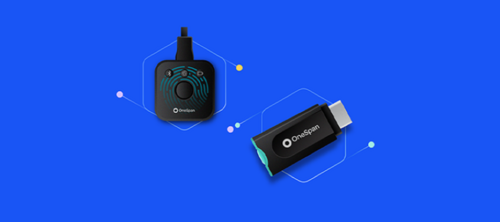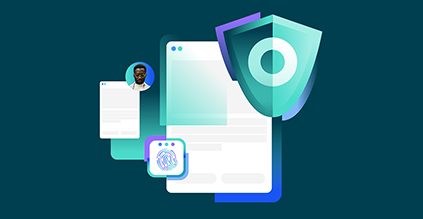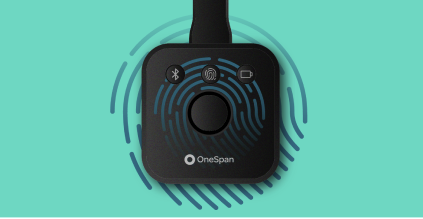Créer et utiliser des modèles
Automatisez le processus de signature électronique pour vos documents les plus fréquemment utilisés
Instructions étape par étape
Création d'un modèle
1) Dans le tableau de bord, sélectionnez "Modèles" dans la barre de navigation supérieure
2) Cliquez sur le bouton "Nouveau modèle"
3) Dans la boîte de dialogue, donnez un nom à votre modèle. Cliquez sur "Créer
4) Ajoutez le document que vous envoyez fréquemment pour signature électronique (par exemple : NDA, renouvellement de prêt hypothécaire, contrat d'employé, etc.)
5) Définissez ensuite les rôles du modèle. Il s'agit d'espaces réservés que vous attribuerez aux signataires réels lorsqu'il sera temps d'utiliser le modèle. Dans cet exemple, nous nommerons le champ de remplacement "Signataire 1". Cliquez sur "Suivant".
6) Faites glisser et déposez vos blocs de signature et vos champs de données dans votre document. Cliquez sur "Terminé". Vous avez créé un modèle avec succès.
Utilisation d'un modèle
1) Dans le tableau de bord, sélectionnez "Nouvelle transaction" et saisissez un nom et une description.
2) Dans la section "Utiliser un modèle", vous verrez que le modèle que vous avez récemment créé est disponible. Sélectionnez le modèle souhaité et cliquez sur "Créer".
3) Votre modèle est prérempli avec le document que vous utilisez fréquemment, les espaces réservés aux destinataires et les champs de signature et de saisie de données. Pour ajouter des destinataires, changez le "Placeholder" en "Recipient" et entrez les détails du destinataire qui doit signer électroniquement la transaction, puis cliquez sur "Next".
4) Dans le panneau des documents, parcourez vos documents pour vérifier les zones que les destinataires doivent signer. Votre transaction est maintenant prête à être envoyée. Cliquez sur "Envoyer pour signer" pour distribuer votre document pour signature.
Questions de la FAQ
Quelle est la différence entre un modèle et une présentation ?
Lesmodèles et les mises en page répondent au même objectif d'automatisation du processus de signature électronique en réduisant le temps nécessaire à l'envoi de documents comportant plusieurs blocs de signature et champs de données. Les modèles sont idéaux pour être utilisés au niveau de la transaction - vous pouvez prédéfinir vos signataires, documents, emplacements de signature et flux de travail de signature électronique afin de rationaliser le processus de signature électronique.
Une présentation, en revanche, est un type de modèle qui vous permet de créer des emplacements prédéfinis pour vos blocs de signature et vos champs de données au sein d'un document. Il agit comme un "marqueur" de l'emplacement des blocs de signature et des champs de données dans le document. Les modèles sont utiles pour les utilisateurs qui envoient fréquemment des formulaires qui peuvent être légèrement différents d'un destinataire à l'autre, mais dont les blocs de signature et les champs de données restent au même endroit dans tout le document. De plus, vous pouvez utiliser plusieurs modèles par document et les appliquer à des pages individuelles de votre transaction.
Quels types de paramètres puis-je assigner à un modèle ?
Lorsque vous créez un modèle dans OneSpan Sign, vous pouvez fixer une date d'expiration, activer la signature en personne, définir la langue, activer la "révision avant achèvement" et indiquer si vous souhaitez que le modèle soit accessible à d'autres membres de votre organisation.
Comment puis-je supprimer un modèle ?
Vous pouvez supprimer un modèle en vous rendant dans la section "Modèles" du tableau de bord. Sélectionnez le modèle que vous souhaitez supprimer, puis cliquez sur l'icône de la corbeille.
Puis-je partager un modèle avec d'autres utilisateurs sous le même compte ?
Oui, vous pouvez partager un modèle avec n'importe quel expéditeur sous votre compte. Cependant, l'expéditeur ne pourra pas les modifier ou les supprimer (seul votre administrateur OneSpan Sign peut le faire).
Puis-je partager un modèle avec d'autres expéditeurs qui ne sont pas sous le même compte ?
Non, les modèles ne peuvent être partagés qu'avec les expéditeurs d'un même compte.
Que se passe-t-il si un autre expéditeur, sous le même compte, enregistre un modèle portant le même nom ?
Les modèles peuvent avoir le même nom sous le même compte car chaque modèle est référencé par son ID et non par son nom.
Ressources complémentaires
- Article de blog : Comment créer et utiliser des modèles
- Blog Post : Comment créer un modèle (à l'aide des SDK/API)
- Documentation : Modèles (utilisation des SDK)
- Documentation : Modèles (utilisation des SDK) Modèles (utilisation des API)
- Guide du développeur : Modèles
- Guide du développeur : Gestion des modèles
Créer et utiliser des modèles
Automatisez le processus de signature électronique pour vos documents les plus fréquemment utilisés
Instructions étape par étape
Création d'une mise en page
1) Après avoir ajouté votre document et vos destinataires à votre transaction de signature électronique, vous êtes dirigé vers la page Préparer où vous pouvez faire glisser et déposer vos blocs de signature et vos champs de données dans votre document. Dans cet exemple, nous enverrons un document NDA de plusieurs pages à Tamara Smith.
2) Pour ne pas avoir à replacer les champs de signature et les champs de données dans ce document la prochaine fois que vous l'utiliserez, vous avez la possibilité d'enregistrer l'emplacement des blocs de signature en tant que modèle. Dans le coin supérieur droit, sélectionnez "Enregistrer la mise en page". La boîte de dialogue Enregistrer la présentation s'affiche. Saisissez une description pour votre modèle. Vous avez également la possibilité de partager la présentation avec d'autres membres de votre organisation. Cliquez sur "Enregistrer".
Application d'une mise en page
1) Supposons que vous deviez envoyer deux documents de plusieurs pages à un client pour qu'il les signe électroniquement. Dans cet exemple, nous avons ajouté un NDA et un document de renouvellement d'hypothèque à la transaction. Ensuite, nous ajouterons les destinataires requis à la transaction. Cliquez sur "Suivant".
2) Vous avez ajouté deux documents différents à une transaction. Au lieu d'appliquer plusieurs blocs de signature et champs de données dans les formulaires d'accord de principe et de renouvellement d'hypothèque, vous pouvez simplement appliquer une mise en page que vous avez créée précédemment pour chaque type de document. En haut à droite, sélectionnez "Appliquer la mise en page".
3) Pour commencer, appliquons une mise en page pour le document NDA de la transaction. Dans la boîte de dialogue "Appliquer la mise en page", sélectionnez la mise en page "NDA" et appliquez-la à votre document.
4) La mise en page NDA est maintenant appliquée à votre document.
5) Appliquons ensuite une mise en page au document de renouvellement de l'hypothèque. Une fois de plus, sélectionnez l'icône "Appliquer la mise en page". Nous avons déjà créé une mise en page pour un formulaire de renouvellement d'hypothèque. Dans la boîte de dialogue "Appliquer la mise en page", sélectionnez la mise en page "Renouvellement de l'hypothèque" et appliquez-la à votre document.
6) En quelques clics, vos documents multipages comportent désormais tous les blocs de signature et champs de données nécessaires, au bon endroit. Avec les mises en page, nous vous aidons à accélérer le processus d'envoi de vos transactions de signature électronique en vous évitant l'inconvénient de glisser-déposer un certain nombre de champs de signature et de champs de données dans vos documents multipages.
Questions de la FAQ
Quelle est la différence entre un modèle et une présentation ?
Lesmodèles et les mises en page répondent au même objectif d'automatisation du processus de signature électronique en réduisant le temps nécessaire à l'envoi de documents comportant plusieurs blocs de signature et champs de données. Les modèles sont idéaux pour être utilisés au niveau de la transaction - vous pouvez prédéfinir vos signataires, documents, emplacements de signature et flux de travail de signature électronique afin de rationaliser le processus de signature électronique.
Une présentation , en revanche, est un type de modèle qui vous permet de créer des emplacements prédéfinis pour vos blocs de signature et vos champs de données au sein d'un document. Elle agit comme un "marqueur" de l'emplacement des blocs de signature et des champs de données dans le document. Les modèles sont utiles pour les utilisateurs qui envoient fréquemment des formulaires qui peuvent être légèrement différents d'un destinataire à l'autre, mais dont les blocs de signature et les champs de données restent au même endroit dans tout le document. De plus, vous pouvez utiliser plusieurs modèles par document et les appliquer à des pages individuelles de votre transaction.
Comment puis-je supprimer/modifier des modèles ?
Pour les clients du plan Entreprise, la suppression des mises en page peut être réalisée via les SDK/API. La première étape consiste à récupérer vos identifiants de mise en page, pour lesquels vous pouvez suivre ce guide. Pour supprimer vos mises en page, vous devrez d'abord déplacer la mise en page dans la corbeille et la supprimer de la même manière que vous supprimeriez un paquet (par exemple, eslClient.getPackageService().deletePackage(layouId)).
Pour les clients du plan professionnel, les administrateurs sont invités à envoyer une demande à l'équipe d'assistance pour qu'une mise en page soit supprimée de votre compte.
Puis-je partager un Layout avec d'autres utilisateurs sous le même compte ?
Oui, vous pouvez partager une mise en page avec n'importe quel expéditeur sous votre compte. Toutefois, l'expéditeur ne pourra pas les modifier ou les supprimer.
Puis-je partager un Layout avec d'autres expéditeurs qui ne sont pas sous le même compte ?
Non, les modèles ne peuvent être partagés qu'avec les expéditeurs d'un même compte.
Que se passe-t-il si un autre expéditeur, sous le même compte, enregistre une mise en page portant le même nom ?
Les modèles peuvent avoir le même nom sous le même compte car chaque modèle est référencé par son ID et non par son nom.





